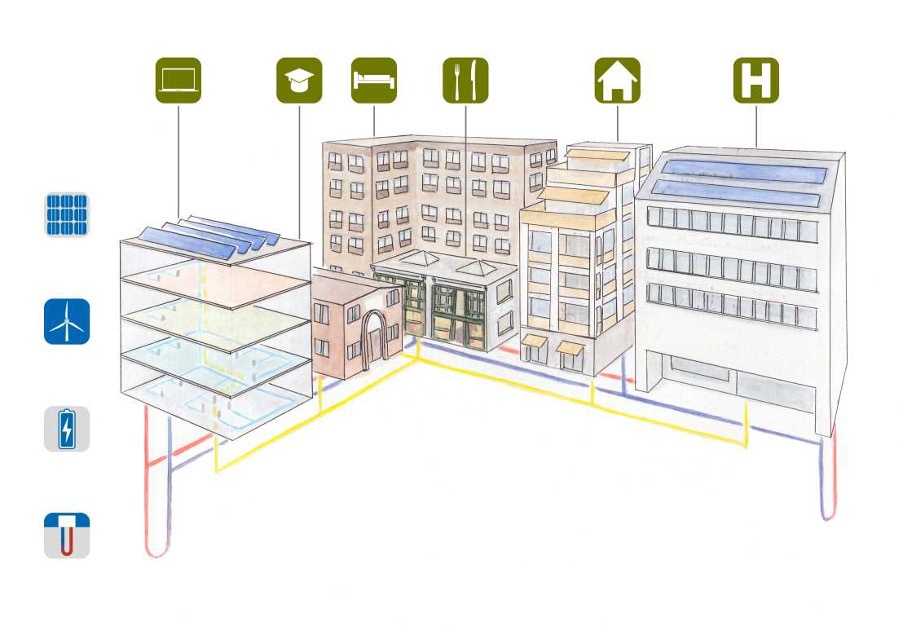Energy System Technologies

The success of the energy transition hinges on the significant transformation of various energy system technologies. Efficiency, generation, conversion, and storage technologies play pivotal roles and are frequently interconnected within decentralized Multi-Energy Systems (MES). These decentralized MES are becoming increasingly significant in the energy sector, offering promising solutions by aligning local energy production with consumption patterns. Simultaneously, achieving the stipulated net-zero targets demands an unprecedented shift in our built environment, necessitating substantial improvements in energy efficiency and the widespread adoption of renewable energy generation technologies.
Our research delves into these facets across various levels, particularly focusing on the building, portfolio, and district scales.
Key findings:
- For the effective, long-term design of decentralized multi-energy systems, we developed MANGO (Multi-stAge eNerGy Optimization), a novel optimization model that incorporates a multi-year planning horizon, along with flexible, multi-stage investment strategies (Mavromatidis and Petkov, 2021).
- On the building level, we demonstrate with our multi-stage energy optimization model for retrofitting (MANGOret) that beyond the trade-offs between minimal cost and low-CO2 solutions, there are ‘minimal regret’ solutions which effectively reduce CO2 at negligible additional costs (external pagePetkov et al., 2022call_made).
- On a portfolio level, fleet-level policy implementations could significantly reduce the required costs toward net-zero building portfolios (external pagePetkov et al., 2023call_made).
- On a district level, where buildings are interconnected with district energy systems, the formulation of optimal long-term strategies and network expansion is significantly influenced by the carbon intensity of the district system (external pageLerbinger et al., 2023)call_made.
- Policy instruments indirectly influencing retrofits, such as those targeting affordability or densification, represent a critical avenue for improving the retrofitting policy mix by moving away from single instruments (e.g. subsidies) directly targeting energy or emissions aspects (external pagePetkov et al., 2021call_made).
Contact
If you would like to receive more information or have questions on this topic, please contact one of the following experts:
